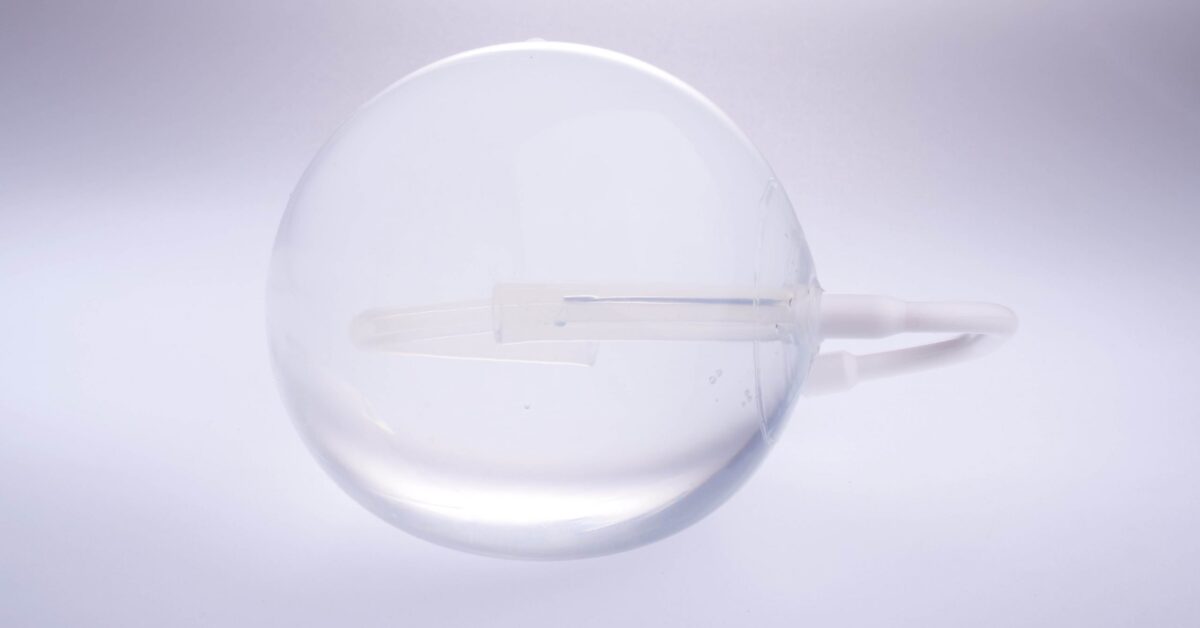The non-surgical procedure takes only 20 minutes, and patients are mildly sedated. Following balloon placement, the patient transitions from a clear liquid diet to a pureed diet, then soft foods, and finally to a long-term diet. Patients with this weight loss solution often lose between 20 and 50 pounds. They must follow the new dietary guidelines to ensure they don’t regain weight.
Controlling Blood Pressure
Like other endoscopic bariatric treatments, gastric balloons help reduce obesity-related diseases and conditions such as GERD (gastroesophageal reflux disease), high blood pressure and type 2 diabetes. They also help patients lose weight and keep it off over the long term.
The procedure takes about 30 minutes under sedation, so you’ll feel relaxed. First, your gastroenterologist will insert a flexible telescope called an endoscope into your throat. It will pass down into your esophagus and then into your stomach, where the balloon will be placed.
Once the balloon is in place, it’s filled with saline and expanded to about the size of a grapefruit. It’s important to drink plenty of water after the procedure. A gastric balloon may cause nausea and pain initially, but these symptoms should disappear within a few weeks. The balloon remains in the stomach for about six months.
During that time, you can expect to lose 20-35 pounds and improve your diabetic and blood pressure control. Once the balloon is removed, our team will provide ongoing support to help you stick to healthy eating habits for life. You’ll need to follow a strict diet to maintain your weight loss. Consume less salt, sugar, and fatty foods. You’ll also want to ensure you chew food well and eat small portions.
Weight Loss
A gastric balloon takes up space in the stomach, making patients feel full and limiting their food intake. It leads to weight loss and helps control blood sugar and blood pressure. It’s also a quick, safe and noninvasive procedure that is less expensive than other bariatric procedures and has a shorter recovery time.
Sedation is used during the treatment, which lasts between 20 and 60 minutes and makes you feel comfortable. Using an endoscope, your doctor inserts the Orbera, Reshape or Obalon balloon into your stomach. The balloon is made of soft, flexible silicone and has a size similar to a grapefruit or a softball. Then, the doctor fills the balloon with saline to make it the correct size. The process is quick and minimally invasive so you can return home the same day.
After your stomach has had time to get used to the balloon, you’ll transition from a clear liquid diet to soft foods, then a long-term, nutritious meal plan created by your nutritionist. You’ll contact your team throughout this process to help support you.
Some patients experience nausea and vomiting in the first few weeks after a gastric balloon is inserted, but these symptoms usually improve. Other side effects include pain or discomfort when swallowing. Rare complications include a deflated or ruptured balloon, which may migrate into the intestines and cause blockage. Some intragastric balloons come with tracking devices to alert the team if this occurs.
Controlling Blood Sugar
Intragastric balloons help control blood sugar in people with Type 2 diabetes. They do so by occupying space in the stomach and slowing the passage of food through your digestive tract, which helps lower your calorie intake and promotes weight loss. In addition, the balloon’s presence can also make you feel full, which can train your body to eat smaller meals.
Studies have shown that patients who stick with their treatment plan lose 10–15 percent of their total body weight after six months of having a gastric balloon. It is only a jump start to long-term weight loss, though. It would help if you continued making lifestyle changes after removing your balloon to keep your weight off.
One serious side effect of a gastric balloon that you should be aware of is the risk of stomach ulcers. These are typically caused by pressure from where the balloon rests at the bottom of your stomach or, in rare cases, a perforation of your gastrointestinal tract (which can lead to life-threatening infection).
Other potential complications with intragastric balloons include deflation (where the balloon malfunctions and overfills itself), which can cause persistent gastrointestinal symptoms or intestinal blockage. Different balloons have tracking devices that can alert your medical team if this happens. Less than 3% of people with the ORBERA or Elipse balloon experience this problem; most require an endoscopy to repair or remove the balloon.
Controlling Diabetes
The FDA-approved Orbera balloon is made of resorbable polyurethane, which degrades over time to release a natural valve. The balloon then deflates and is naturally excreted through the patient’s system. It allows patients to avoid an endoscopic procedure and may be advantageous for those who prefer not to have a saline-filled balloon in place for an extended period.
During the initial stages of balloon insertion, you’ll be asked to follow a liquid diet. It will last for a couple of weeks as your stomach adjusts to the presence of the balloon. Your doctor will give you anti-sickness medication to help manage nausea. Some people experience heartburn or acid reflux after the procedure. Medicines for this are usually provided, and advice to eat small amounts of food and avoid fatty, spicy and sugary foods.
Once your symptoms have subsided, you can resume a normal diet. Your doctor will regularly monitor your development and mandate that you keep a food journal. You’ll also work with a dietitian and other care team members to establish a lifestyle plan to support your long-term weight loss goals. You’ll be offered six months of close guidance and support to maintain a healthy diet and lifestyle. Studies have shown that the gastric balloon works as a jump start for sustainable long-term weight loss, helping you to lose up to 29 percent of your body weight.


